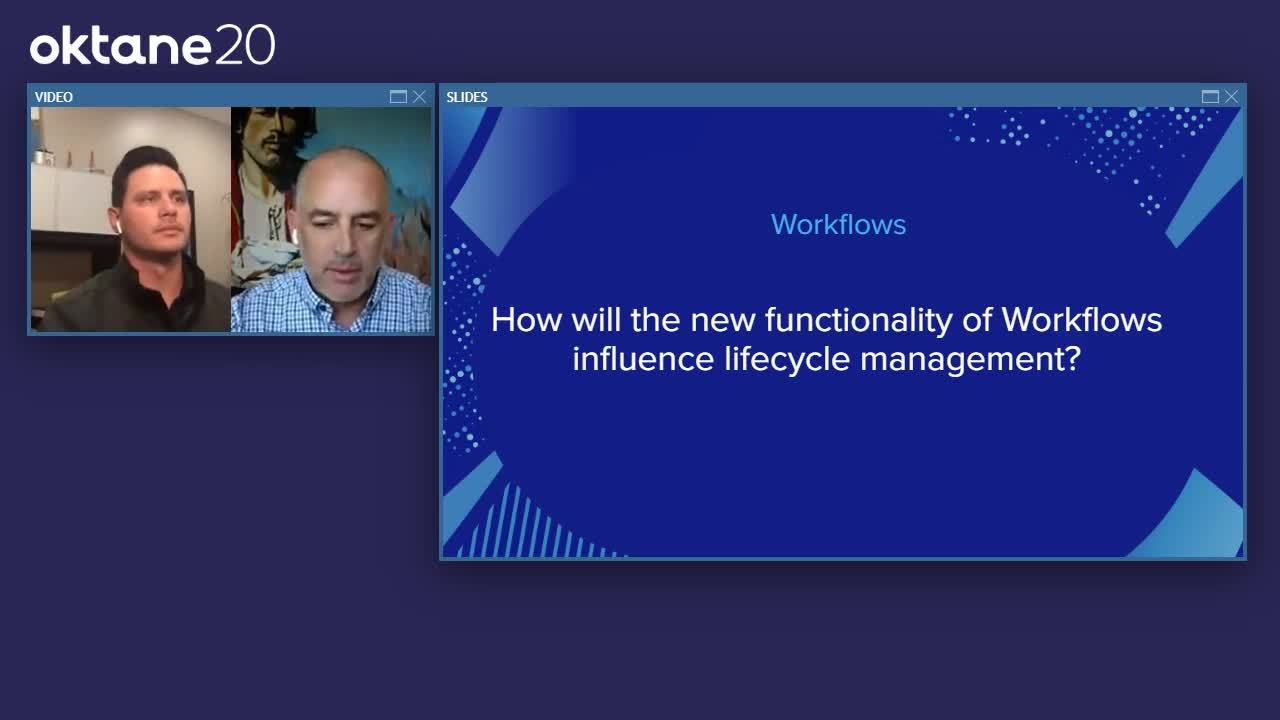Knowledge When You Need It: Okta Experts Offer Tips on Deployment Success
What does it take to deliver an exceptional digital experience to users? To start, you need an engaging product or service, supported by great apps. But there are also several behind-the- scenes components that need to be factored in to keep the customer-facing experience as protected and frictionless as possible.
At the same time, as companies around the world move their systems and services online, identity and access management (IAM) and security are essential features that have to be incorporated without disrupting user experience. But not all companies have the resources or infrastructure to do this effectively.
In order to help organizations along the path to effective IAM, our certified team of Identity Experts support businesses of all sizes in solving deployment and integration challenges while delivering value. At Oktane20, I sat down with a group of them to talk about common mistakes that companies make during implementation as well as the best practices that they have implemented while collaborating with our customers. They shared recommendations for companies that are both new and experienced in the IAM space, as well as suggestions on how to future-proof your organization. Here’s what they had to say.
Starting with implementation
You know that modernizing your workplace infrastructure is key—and that means implementing robust identity and security functionalities. But how can you do this without compromising your existing systems and user experiences? During the panel, we discussed some of the common challenges organizations face as they implement modern security solutions like Okta, and how they can address these:
- Use the right data: Organizations often create test environments that use outdated data that doesn’t match what would exist in production, making it easy to miss potential errors and vulnerabilities. To correct this, the data your development team uses in test cases should mirror that in your production environment so that any problem areas can be remedied early on.
- Conduct end-to-end testing: Lack of testing is the root cause behind a lot of implementation issues. Using the Okta preview environment and staggered implementations can ensure you have the right level of visibility into any potential vulnerabilities.
- Establish a solid foundation of best practices: Because the Okta Identity Cloud makes it so easy to set up new activations, organizations may rush to do this to meet tight deployment deadlines—but if they’re not adhering to best practices, they’ll have to reinstall and reconfigure their setup later on. Our team makes sure customers are following the right steps from the get go, so that you can have the best of both worlds: meticulous configurations within compressed timelines.
Lastly, our panelists talked about the need to have Okta Master “break the glass” accounts to ensure that you can always access your Okta platform in case something goes wrong and you need to reverse changes.
You can always level up your Okta solutions
At Okta, one thing we’ve noticed is that our current customers are sometimes so satisfied with the systems we’ve helped them configure, that they aren’t aware of how they can be taken to the next level. To help shed some light on these optimization opportunities, our panelists discussed some of the recent Okta features that customers are starting to incorporate.
For instance, many of our customers already take advantage of Okta’s pre-built integrations to third-party apps. What they may not know is that Okta Workflows enhances their lifecycle management capabilities for managing identity and integrating with partners, with advanced flows that require little to no code. This new product represents our fine-grained approach to creating separate integrations that are then scheduled and activated through our platform.
Likewise, Okta Access Gateway (OAG) creates new possibilities for centralizing and consolidating identities so that your developers can be granted remote access to the on-prem apps they need—a crucial strategic advantage when so many of us are working out of our home offices.
Offering a different approach to implementation, the Okta Identity Engine focuses on customizability. Exposing the Okta platform as a set of building blocks, it allows customers to tailor experiences to suit even the most unique and specific use cases. And with the help of the Professional Services team, you can implement these features so that they can continue to optimize your IAM posture.
Sometimes, the best place to start is in the future
As we collaborate with our customers, our focus is to ensure that their organizations are future-proof—and that means always planning with the future in mind. For instance, our Professional Services works with customers on what we call “Phase 0”, a pre-engagement plan in which we craft a future state design for potential customers.
Keeping the future in mind, our panelists spoke about the Okta Diagnostic, a tool for existing customers that helps ensure you’re getting the best value out of your implementation. This unique offering gives you a chance to collaborate with Professional Services over the course of two to four weeks to review your engagement with Okta. From there, you can envision a refreshed future state architecture based on current best practices in the identity and security space.
This is especially useful for enterprises that have experienced turnover, where the IT and security admins who oversaw the organization’s original Okta implementation have since been replaced by new talent. This is also an opportunity to put a longer-term plan in place so you can begin the process of discontinuing outdated and cumbersome systems like Active Directory.
Implementing the latest IAM solutions shouldn’t be a daunting task. For more insights from our Ask the Experts panel, watch the full recording of our Oktane20 session here. And if you want to learn more about how Okta can support your implementation needs, contact us today.


